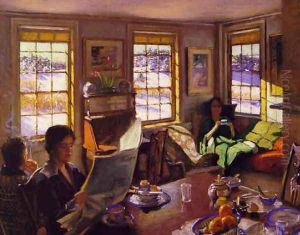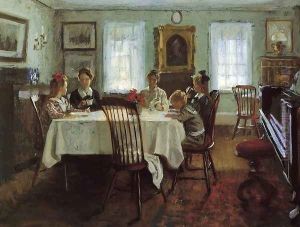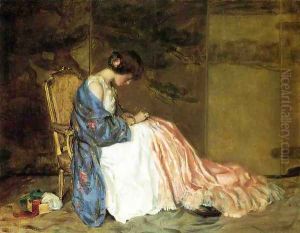William Wallace Gilchrist Jr. Paintings
William Wallace Gilchrist Jr. was an American artist, primarily known for his landscape paintings, born in 1879. His father, William Wallace Gilchrist Sr., was a well-known composer, which provided a culturally rich environment for the younger Gilchrist's upbringing. Despite the artistic milieu in which he was raised, there is relatively limited information available about his life and career compared to more prominent artists of his time.
Trained in the arts, Gilchrist Jr. developed a style that reflected the American impressionist movement, a style that gained considerable popularity in the United States at the turn of the 20th century. His works often depicted serene landscapes and were known for their use of light and color, capturing the varying atmospheres of the scenes he portrayed.
Throughout his career, Gilchrist Jr. exhibited his work at various institutions, which included the Pennsylvania Academy of the Fine Arts, an institution with which he had a close connection. His paintings also received recognition from the art community, and he was involved with artist colonies, which were crucial for the development and exchange of artistic ideas during that period.
William Wallace Gilchrist Jr. passed away in 1926, leaving behind a modest but respected body of work. While he may not have achieved the same level of fame as some of his contemporaries, his paintings continue to be appreciated by collectors and art historians for their contribution to American Impressionism and for their portrayal of the American landscape during the early 20th century.


